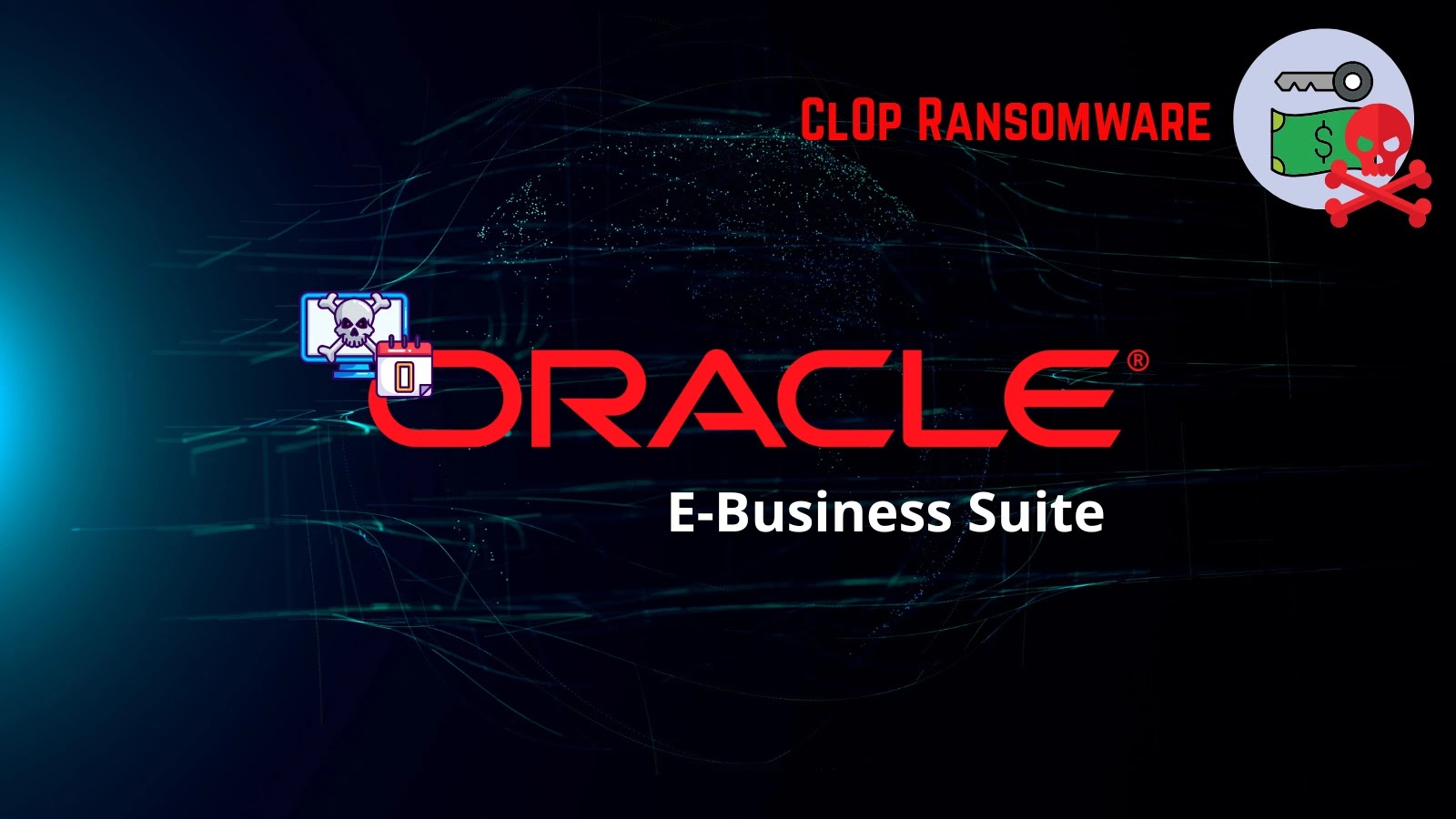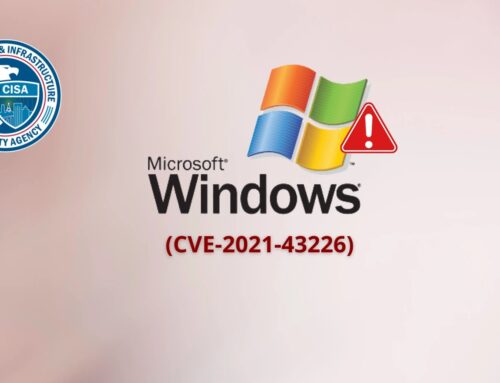
Cl0p Ransomware Actively Exploiting Oracle E-Business Suite 0-Day Vulnerability in the Wild
Cl0p Strikes Oracle: Urgent 0-Day Vulnerability in E-Business Suite Demands Immediate Action
The cybersecurity landscape has once again been rattled, this time by the notorious Cl0p ransomware group. They are actively exploiting a critical zero-day vulnerability in Oracle E-Business Suite, specifically targeting the Business Intelligence Publisher (BI Publisher) Integration component. Oracle has issued an emergency security alert for this flaw, now identified as CVE-2025-61882, following reports of Cl0p leveraging it to extort customers who failed to promptly patch their systems. This remote code execution (RCE) vulnerability carries a maximum CVSS score of 9.8, underscoring its severe potential impact.
Understanding CVE-2025-61882: A Critical Oracle E-Business Suite Flaw
The heart of this urgent threat lies within CVE-2025-61882. This zero-day vulnerability resides within the Business Intelligence Publisher (BI Publisher) Integration component of Oracle E-Business Suite. Its classification as a Remote Code Execution (RCE) vulnerability is particularly alarming, as it grants attackers the ability to execute arbitrary code on affected systems from a remote location. With a CVSS v3 score of 9.8, this flaw represents a near-maximum severity, indicating a high probability of successful exploitation and significant damage.
For organizations relying on Oracle E-Business Suite, especially those utilizing the BI Publisher component, the exploitation of this vulnerability by a ransomware group like Cl0p presents an immediate and severe risk. Successful exploitation could lead to full system compromise, data exfiltration, encryption of critical business data, and ultimately, significant operational disruption and financial loss due to ransom demands.
Cl0p’s Modus Operandi: Targeting Unpatched Systems
The Cl0p ransomware group has a well-documented history of exploiting critical vulnerabilities to gain initial access to corporate networks. Their strategy often involves scanning for publicly exposed, unpatched systems and then leveraging known or zero-day flaws to breach defenses. This current campaign targeting Oracle E-Business Suite customers aligns perfectly with their past tactics. The fact that Oracle issued an emergency alert directly citing Cl0p’s activities highlights the urgency and the tangible threat posed to organizations running vulnerable versions of the software.
Once Cl0p gains access through an RCE vulnerability like CVE-2025-61882, their typical attack chain involves:
- Lateral Movement: Spreading throughout the compromised network to identify and access critical systems.
- Data Exfiltration: Stealing sensitive data before encryption to increase leverage for ransom demands.
- Data Encryption: Encrypting files and systems, rendering them inaccessible to the legitimate owners.
- Extortion: Demanding a ransom payment, often in cryptocurrency, for decryption keys and to prevent data leaks.
Remediation Actions: Securing Your Oracle E-Business Suite
Immediate action is paramount to protect your organization from the Cl0p ransomware threat. Oracle’s emergency security alert necessitates a rapid response:
- Apply Patches Immediately: Monitor Oracle’s official security advisories and critical patch updates (CPUs) for the patch specifically addressing CVE-2025-61882. Prioritize testing and deployment of this patch across all affected Oracle E-Business Suite instances, especially those with the Business Intelligence Publisher (BI Publisher) Integration component.
- Network Segmentation: Implement or strengthen network segmentation to isolate your Oracle E-Business Suite environments from other critical systems. This can limit lateral movement if a breach occurs.
- Review Access Controls: Scrutinize and enforce strict access controls for all E-Business Suite components. Adhere to the principle of least privilege.
- Monitoring and Logging: Enhance logging and monitoring capabilities for your Oracle E-Business Suite and the surrounding infrastructure. Look for unusual activity, unauthorized access attempts, or signs of compromise.
- Endpoint Detection and Response (EDR): Ensure EDR solutions are fully deployed and configured to detect and respond to suspicious activity on servers hosting E-Business Suite components.
- Regular Backups: Maintain a robust, tested backup and recovery strategy for all critical Oracle E-Business Suite data. Ensure backups are stored offline or air-gapped to prevent ransomware encryption.
- Vulnerability Scanning: Regularly scan your external and internal networks for vulnerabilities, paying special attention to publicly exposed Oracle E-Business Suite instances.
Tools for Detection and Mitigation
Leveraging appropriate tools is crucial for identifying vulnerabilities, detecting compromises, and securing your Oracle E-Business Suite environment. Below is a table of relevant tool categories and examples:
| Tool Category | Purpose | Example Tools / Approaches |
|---|---|---|
| Vulnerability Scanners | Identify known vulnerabilities, including missing patches, in Oracle E-Business Suite and underlying OS. | Nessus, Qualys, OpenVAS, Nexpose |
| Enterprise EDR/XDR | Detect and respond to advanced threats, including ransomware, on servers hosting E-Business Suite. | CrowdStrike Falcon, Microsoft Defender for Endpoint, SentinelOne |
| Intrusion Detection/Prevention Systems (IDS/IPS) | Monitor network traffic for suspicious patterns and block known attack signatures targeting E-Business Suite. | Snort, Suricata, Network-based WAFs |
| Security Information and Event Management (SIEM) | Centralize and analyze security logs from E-Business Suite, OS, and network devices for threat correlation. | Splunk, IBM QRadar, Elastic SIEM |
| Web Application Firewalls (WAFs) | Provide a layer of protection for web-facing E-Business Suite components against common web attacks. | ModSecurity, Cloudflare WAF, Akamai Kona Site Defender |
Conclusion: The Urgency of Patching and Proactive Security
The active exploitation of CVE-2025-61882 by the Cl0p ransomware group underscores the unwavering need for robust cybersecurity posturing. This incident serves as a stark reminder that zero-day vulnerabilities, especially in critical enterprise software like Oracle E-Business Suite, are prime targets for sophisticated threat actors. Organizations must prioritize applying Oracle’s emergency patches, strengthening their overall security controls, and maintaining vigilance to protect against these evolving threats. Proactive security measures, continuous monitoring, and a rapid incident response plan are your best defense against such high-impact ransomware campaigns.





